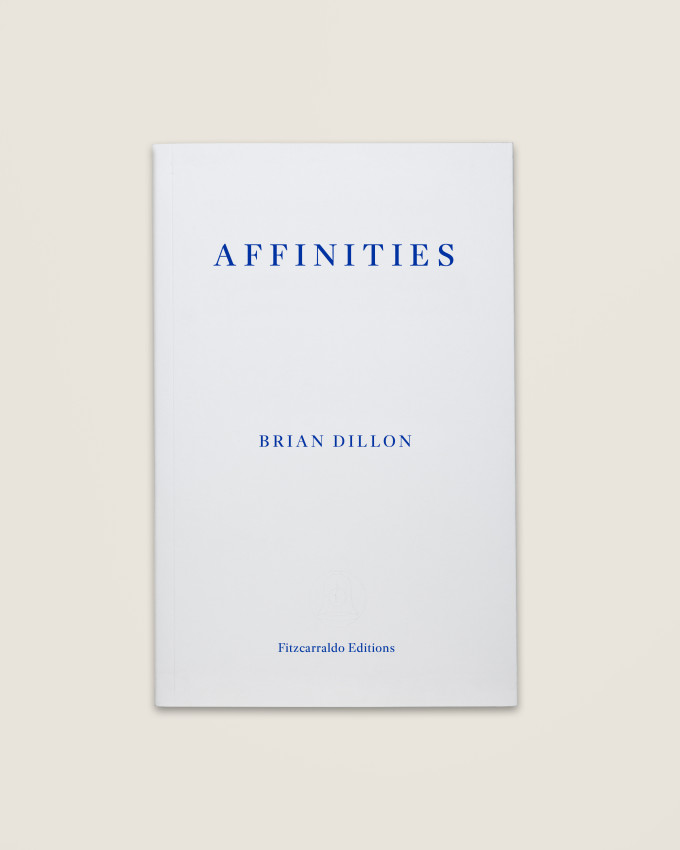The thorny question of personal taste is unfolded by the Irish art critic in an exploration of what it means to be drawn to one artwork over another
‘I found myself frequently using the word affinity, and wondered what I meant by it,’ art critic and writer Brian Dillon declares in Affinities, a collection of Dillon’s articles and essays, threaded by a ten-part reflection on what draws him to write about artworks – the feeling or approach he tentatively defines as something akin to ‘fascination’, ‘like but unlike critical interest’.
But critical interest ‘remains too often at the level of knowledge, analysis, conclusions, at worst the total boredom of having opinions’. It’s this antagonism, towards the demands made of the critic by bigger critical projects, that shadows Dillon’s elegantly fashioned, thoughtful and informed texts. Ordered in the loose chronology of their subjects’ lives, these range across a long century of modernity. Though he doesn’t seem to notice (or see fit to note), Dillon’s affinity is often for the works of women artists, overlooked or who died too soon – from Victorian photographer Julia Margaret Cameron, dancer Loie Fuller, architect Eileen Gray, artists Hanna Höch, Claude Cahun, Dora Maar, Diane Arbus and Francesca Woodman – via appreciations of Powell and Pressburger films, Charles and Ray Eames, William Eggleston and Samuel Beckett, among others.
What Dillon does notice about his affinities has to do with ‘a state of bodily between-ness verging on dissolution, aspiring to reconvene otherwise, in alternative forms’. There’s much about androgyny, photographic blur and fragments of bodies (and a superb text on the visual hallucination that presages a migraine). It’s tempting to see in Dillon’s aesthetic indeterminacy an analogue of critical deferral – affinity as ‘a means of escaping the community at hand, positing a community to come.’ Alert to the political vagueness of this, he ventriloquises the ‘voice of the academy’, asking ‘but what are the politics of all this?’, while recoiling from those writers who turn ‘aesthetic or political preferences into a self-conscious programme’.

Dillon circles around how ‘ideology is the limit that we do not like to admit we live inside’. But ‘ideology’ is a historically big and politically battered concept; what Affinities does ‘live inside’, though, are the constraints of art criticism in relation to institutions; to the artworld and the academy. Viewing Affinities from outside, as it were, we find theory, the canon and the academy are all still there, just outside the frame, making the preselections that brings these artists to the critic’s attention in the first place: Dillon’s selections are all variously emblematic of a postmodern narrative of modernism. Still, at a time when much writing about art is too timid to do more than connect artworks to tick-box sociopolitical issues (making art criticism dull to write and even more tedious to read), Dillon’s wilful sticking to what fascinates him reminds us where criticism starts from – some valuing of one’s self and experience, some ‘fascination’ at the object that provokes us, that ‘we’ might share in this, and that to do so is an issue worth deliberating.
The limit, though, is precisely how to connect to something bigger than what is nevertheless still one’s taste (a loaded term Dillon dismisses). A few theorists and erudite non-academic critics float through Affinities (Roland Barthes is a touchstone; Janet Malcolm and Wayne Koestenbaum recur elsewhere) while contemporary theorists are pretty much ignored. But refusing to have bigger theoretical commitments imposed denies the possibility of choosing them for oneself. Affinities ends inconclusively (perhaps necessarily so) with a long list of more images and artworks yet to be written about…
Affinities by Brian Dillon. Fitzcarraldo, £13.99 (softcover)
